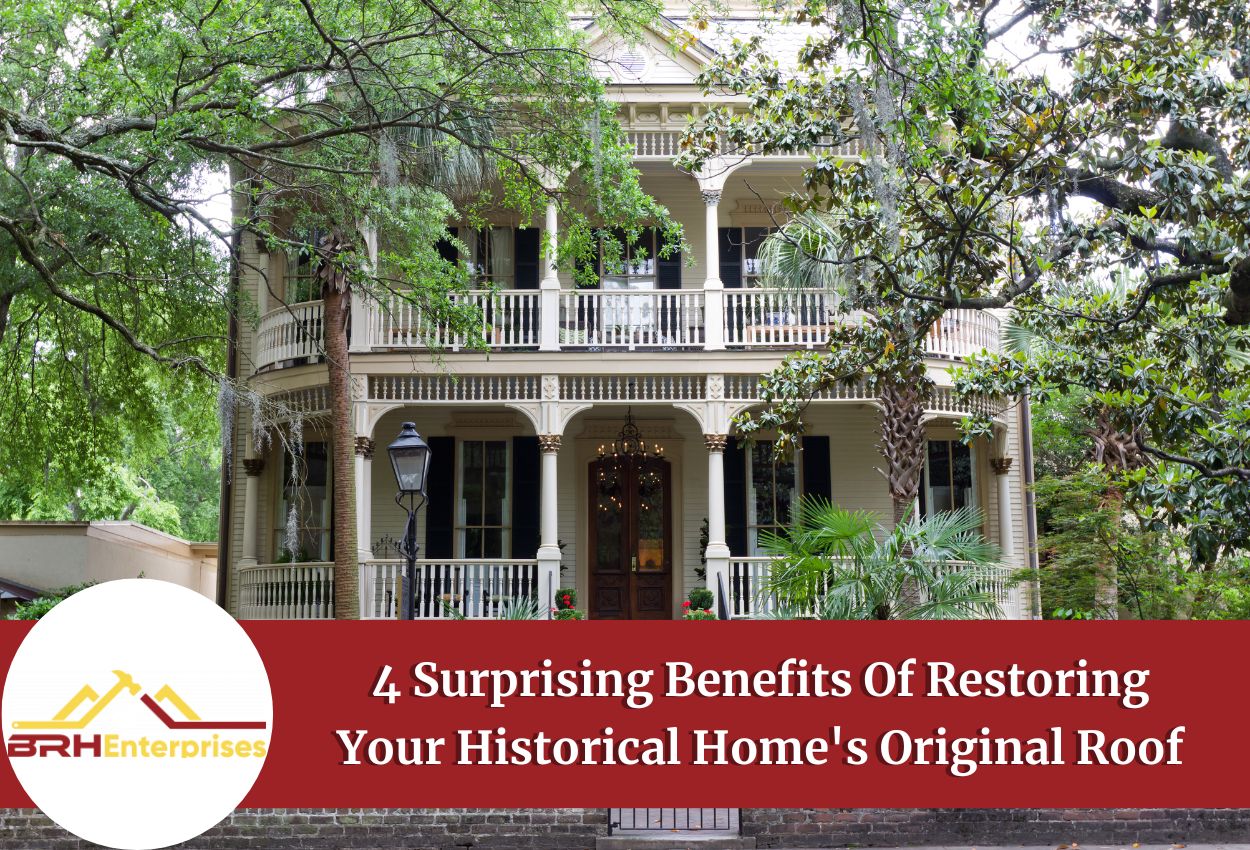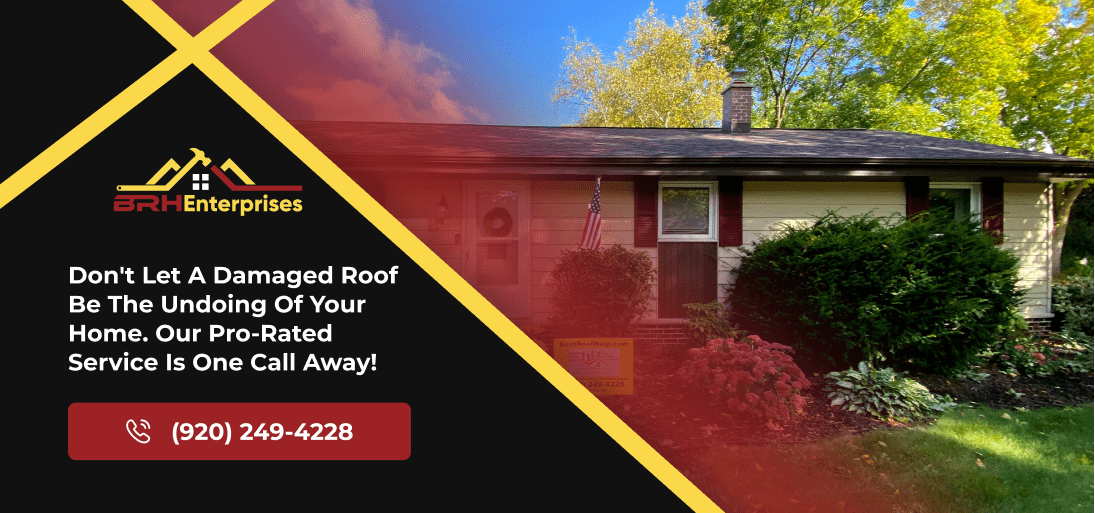4 Surprising Benefits Of Restoring Your Historical Home’s Original Roof
Estimated Reading Time : 5 Min.

Do you want to replace your historical roof with a new one? Stop! Read this blog post before it’s too late.
In this post, we’ll explain four surprising benefits of restoring your historical roof. As historical roofs and homes are an integral part of our culture, heritage, and existence, demolishing such structures harm our economy and the historical evidence they provide.
Furthermore, restoring your roof is not only important for cultural significance but also for the benefits outlined in this blog post.
What Is Roof Restoration?
Roof restoration is the complex and specialized process of preserving historical integrity by repairing and replacing damage. While you may have to pay additional costs to restore or preserve historic structures, it will benefit you in the long run by increasing your home’s value and aesthetic appeal. It also has several other benefits that we’ll discuss later in this post.
If you own a historical home or plan to own one, completely replacing its roof may not benefit you in the long run. In fact, a newly installed roof can be a burden when placed on an old and historical structure.
Roof restoration involves many processes, including researching the historical value and the original design of the roof, proper planning, repairing, and replacing its damaged portions, and proper maintenance and cleanup. Additionally, it’s critical to preserve and maintain the original look of a historical home while ensuring the structure is safe, which requires specialized roofers to handle the roofing project. A misstep can lead to further damage, lowering the home’s integrity and reducing its value and aesthetic appeal.
Why You Should Restore Your Historical Roof
Restoring a historical roof is crucial to preserving the integrity and charm of your historical property. The roof is one of the most important components of any building, protecting it from the elements and maintaining its structural integrity. A restored historical roof not only maintains the original design and character of the building, but also adds value to a property.
1. Preservation Of Historical Integrity
Preserving historical integrity is important for maintaining a building’s aesthetic appeal and serves as a way to honor and acknowledge the past. Historical roofs often reflect the architectural styles and construction techniques of the time period in which they were built.
Additionally, a restored historical roof can help retain the character and charm of a neighborhood or city, contributing to the cultural and historical significance of the area. In short, the restoration of a historical roof is an act of respect toward the building’s heritage and a way to preserve its significance for future generations to enjoy.
2. Increased Property Value
Historical buildings have a higher property value not only because they are structurally outstanding and aesthetically pleasing but also because they are made of durable and long-lasting materials. The materials that historical roofs are made of play a vital role in increasing a property’s value. As people become increasingly aware of their history, there is a growing interest in preserving it. This interest extends to historical buildings and roofs, which are now in high demand and are sold at higher prices. Consequently, if you happen to own an old roof that can be considered historical, you possess a valuable piece of history.
3. Their Energy Efficiency Can Benefit You
Despite their age, the roofs of historical homes often provide greater energy efficiency compared to newer structures. This is due to the materials and construction techniques used in the past, which were designed to withstand extreme weather conditions and insulate homes effectively.
If you live in an old or historical home, you may have noticed how well they maintain a cool temperature during hot weather and insulate efficiently during the winter, keeping the warmth inside the building. These essential factors contribute to reduced energy costs, ultimately saving you money on your energy bills.
4. They Are Durable Enough To Restore
Historical roofs can last for many more years if restored properly. The fact that roofs installed in the past still exist today is a testament to their durability.
Durability is the measure of the roofing material’s ability to withstand intentional or accidental impacts. Historical roofs have stood the test of time, enduring various weather conditions for decades, indicating that they are strong enough to be restored and preserved. By repairing or replacing historical roofs, their durability can be maintained, saving you money in the long run.
How Long Does A Roof Restoration Take?
The time it takes to replace a roof depends on many factors, including the size of the roof, the complexity of the roof, the age of the roof, the extent of damage, the materials used, and more.
Depending on the above factors, a roof restoration generally can take around a couple of weeks to a few months to complete. Once the assessment of the roof is done, the contracting team will typically repair or replace the damaged portion of the roof and integrate modern roofing materials.
If the roof is complex, or in poor condition, you should expect the roof restoration process to take longer than several weeks, along with it being more expensive than a simple restoration project. This is due to the necessary labor that will be required, and the manpower needed to do so.
How Much Does A Roof Restoration Cost?
The longer the roof restoration process continues, the higher the cost will be. The cost of restoring a historical roof depends on various factors, such as the complexity of the roof design, materials used, and other relevant factors. Furthermore, the cost of restoring a historical roof may be higher compared to a regular roof due to the additional care and attention required. The total cost may also increase based on the number of laborers required to complete the project.
On average, roof restoration costs around $5,000 and $12,000, depending on the extent of restoration. While restoring your historical home or roof, ensure you hire a professional team and expert roofers who can do a quality job without harming the roof’s integrity. Overall, the quality of work will result in the quality of roof restoration.
Questions To Ask Professionals Before They Restore Your Historical Roof
Before you hand the project over to a professional team, ensure you ask the following questions. As maintaining the integrity of the historical roof is critical, hiring unskilled roofers could do more harm than good.
1. What is your experience with historical roof restoration?
This question is crucial as you want a contractor who has had previous experience handling historical roofs and knows the work that goes into them.
2. Can you provide references to previous historical roof restoration projects?
Check if they have successfully completed their previous restoration project and if any issues have developed since they worked on it
3. What is your roof restoration process?
This will help you estimate the amount of time and money that will go into the restoration project, whether the material they plan on using is good quality or not, and their project handling skills.
Are You Ready To Restore Your Roof?
If you feel this blog post properly explained to you the benefits of restoring your roof, you may be looking for the next step and want to start the roof restoration process today. Contact BRH Enterprises today at (920) 249-4228 and hire our team of professionals for your historical roof restoration. Our team members are experts at handling any roofing project, including historical roof repair, replacement, and installation.


